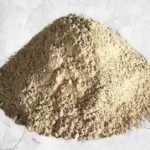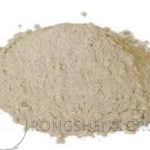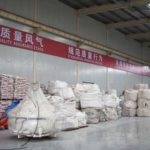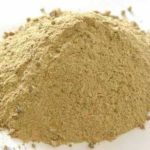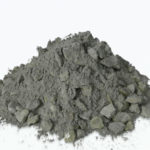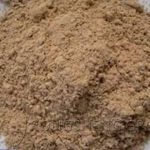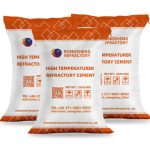Refractory cement is any raw material made from high-quality bauxite and high-quality lime in a certain proportion. After sintering, the resulting clinker, mainly composed of aluminates, is ground into fine powder to produce a refractory hydraulic cementitious material. The refractoriness of refractory cement is not less than 1580 degrees Celsius.
Different Compositions of Refractory Cement
Refractory cement can be classified according to its composition into aluminate refractory cement, low-calcium aluminate refractory cement, calcium-magnesium aluminate cement, and dolomite refractory cement, etc. Refractory cement is also known as high-temperature cement. It is cement with added special materials used in the preparation of high-temperature (refractory) concrete. The main types are:
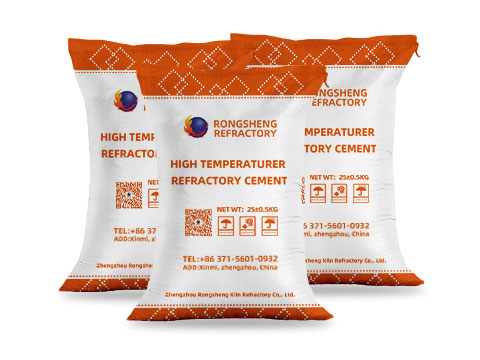
- ① Low-calcium aluminate refractory cement, with pure bauxite and limestone as the main raw materials. This includes Secar cement from France.
- ② Dolomite high-temperature cement, made with dolomite as the main raw material, and the addition of apatite, iron ore, etc.
- ③ High-temperature refractory cement using materials that can undergo chemical reactions and harden at high temperatures. Such as refractory sulfates, borates, and phosphates as binders.
Technical Classification of Refractory Cement
(1) Aluminate Refractory Cement
Aluminate refractory cement is typically a type of refractory cement made by mixing and grinding 4 parts by weight of low-calcium aluminate refractory cement clinker and 1 part by weight of high-alumina cement clinker. Compared with low-calcium aluminate refractory cement, it has higher early strength, similar refractoriness, and the same applications.
(2) Low-calcium aluminate refractory cement
High temperature cement with a refractoriness of not less than 1580°C. According to different compositions, it can be divided into aluminate refractory cement, low-calcium aluminate refractory cement, calcium-magnesium aluminate cement, and dolomite refractory cement, etc. Refractory cement can be used to bind various refractory aggregates (such as corundum, calcined high-alumina bauxite, etc.) to make refractory mortar or concrete, used as linings for cement rotary kilns and other industrial kilns.
Low-calcium aluminate refractory cement is a hydraulic cementitious material with refractoriness, made by sintering high-quality bauxite and high-quality limestone in a certain proportion to form clinker with low-calcium aluminate as the main component, and grinding it into fine powder.

Low-calcium aluminate refractory cement is an aluminate cement made by sintering and grinding high-quality bauxite and limestone in an appropriate proportion. Its composition is generally: 70% alumina, 19%–23% calcium oxide, <4% silicon dioxide, and <1.5% iron oxide. The mineral composition is mainly calcium aluminate, accounting for 60%–70%, with a refractoriness above 1650℃. Compared with high-alumina cement, the main differences are: higher alumina content, lower calcium oxide content, lower early strength, and higher refractoriness. It can be mixed with refractory aggregates with a refractoriness above 1770℃ (such as calcined bauxite, high-alumina brick fragments, etc.) to prepare refractory concrete or refractory mortar for use as linings in cement rotary kilns and other industrial kilns.
Its applications include:
- It can be mixed with refractory materials with a refractoriness above 1770℃, such as calcined bauxite, high-alumina brick fragments, etc., to prepare refractory concrete or refractory mortar. Used as refractory linings in certain high-temperature kilns and in certain high-temperature projects subjected to long-term atmospheric and rainwater erosion.
- Can be mixed with lightweight aggregates to form heat-insulating and heat-resistant concrete.
- Can be mixed with asbestos to form asbestos high temperature cement products with insulating and heat-resistant properties.
(3) Calcium Magnesium Aluminate Cement
Calcium magnesium aluminate cement is an aluminate cement made by sintering and grinding high-quality bauxite and dolomite in appropriate proportions. Its composition is generally: 66%–74% alumina, 13%–18% calcium oxide, 10%–13% magnesium oxide, with trace amounts of silicon dioxide and iron oxide. The mineral composition is dominated by calcium aluminate and calcium dialuminate (45%–60%), and spinel (35%–50%). Its refractoriness is above 1650℃.
Compared to low-calcium aluminate cement, calcium magnesium aluminate cement has the following advantages: stronger resistance to slag and chemical erosion from molten metal; higher refractoriness due to the presence of spinel at the same alumina content; less mixing water, resulting in lower porosity and less shrinkage after hardening; and less strength loss during dehydration at 1100℃. Calcium magnesium aluminate cement, when mixed with aggregates such as fused white corundum, can be used to make concrete, which can be used as the lining of cement rotary kilns and other industrial kilns.
Baking and Technical Requirements of Refractory Cement
Refractory cement refers to high temperature cement with a refractoriness of not less than 1580°C. Refractory cement is a hydraulic cementitious material made from clinker produced by calcining bauxite and limestone, with calcium aluminate as the main component and an alumina content of approximately 50%, and then grinding it. According to different compositions, it can be divided into aluminate refractory cement, low-calcium aluminate refractory cement, calcium-magnesium aluminate cement, and dolomite refractory cement, etc. Refractory cement can be used to bind various refractory aggregates, such as corundum and calcined high-alumina bauxite, to make refractory mortar or concrete, used as linings for cement rotary kilns and other industrial kilns.

Precautions for Baking Refractory Cement Furnace Linings
- (1) At the ambient temperature of 350°C, localized cracking is most likely to occur; therefore, special attention should be paid to slow baking. If a large amount of steam still emerges after holding at 350°C, the heating rate should be slowed down.
- (2) Under conditions of poor ventilation and difficulty in removing moisture, the holding time should be appropriately extended.
- (3) When baking with heavy oil, prevent heavy oil from spraying onto the furnace lining surface to avoid localized cracking.
- (4) When baking with firewood, direct contact with the flame often causes excessively rapid localized heating; protection should be provided.
- (5) Newly poured refractory cement should not be baked until at least 3 days have passed.
- (6) Cooling of the refractory cement furnace lining should also be slow, avoiding forced ventilation.
Technical requirements for refractory cement:
- (1) Fineness of refractory cement: The finer the cement particles, the larger the specific surface area, the faster and more complete the hydration reaction, and the higher the early and later strength. It is stipulated that the specific surface area should be greater than 300 square meters per kilogram. Otherwise, it is considered unqualified.
- (2) Setting time of refractory cement: To ensure sufficient time for mixing, transportation, molding, and other processes during construction, the initial setting time of the high temperature cement should not be too short. After construction, it is desirable for the cement to harden and develop strength as quickly as possible; therefore, the final setting time should not be too long. The initial setting time of refractory cement should not be earlier than 45 minutes, and the final setting time should not be later than 390 minutes.
- (3) Volume stability of refractory cement: The uniformity of volume change of high temperature cement paste during the setting and hardening process is called the volume stability of cement. If the volume change is uneven, the volume stability is poor, which can easily lead to warping and cracking, reducing project quality and even causing accidents.


